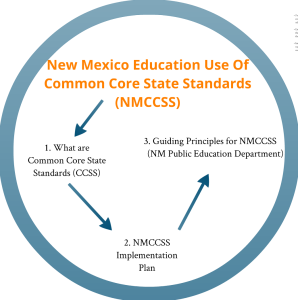PARCC States Successfully Wrap Up Field Test
Washington, D.C. — More than one million students completed field tests last Friday, after nine weeks during which students participated in a trial run of the new tests developed by member states in the Partnership for Assessment of Readiness for College and Careers. The tests are being developed in English language arts/ literacy and mathematics for grades 3-8 and high school.
“The completion of the PARCC field testing marks a key milestone in our development of an innovative assessment system aligned to the state-developed Common Core standards,” said Mitchell Chester, the Massachusetts education commissioner, who also chairs the PARCC governing board. “Overall, students had a very positive experience with the items and the new, online format. We’ll now use the feedback from students and educators to refine the test for next year’s operational testing.”
The goal of the field test was to “try out the nearly 10,000 test items developed by teachers, college and university faculty and others from the PARCC states,” according to Laura Slover, chief executive officer for PARCC, Inc., the non-profit managing the project for the states. She noted that at least 30 sets of eyes had seen each test item before it made it to the field test. Even now, she said, testing experts will review the results of the tests to make sure each item is valid. Some may be discarded or require revision based on the field testing.
The field test was also an opportunity for students and schools to test out their own technology and the test platform, learn about the test administration procedures, and provide feedback.
Student survey results revealed they generally like the online format of the test, and many found the test questions more engaging than their previous standardized tests. Test administrators also were positive, though they noted that the instructions for administrators were too long and could be clearer, something Slover said staff and state members would be working to address. Slover said additional detail from the surveys will be released in coming weeks. “We are compiling a list of lessons learned that we will share with states and the public this summer,” Slover said.
The tests, which will be given starting next school year, are part of a larger assessment system, which includes other voluntary components: interim assessments to measure whether students are on track, diagnostic assessments that allow teachers to check in on student performance throughout the year and adjust instruction to meet student needs, formative tasks, speaking and listening assessments, and professional learning resources for teachers.
Education chiefs from the participating states say the field test has been vitally important to developing the assessment system, and useful for schools as they prepare for next year.
“As we close the PARCC field tests in the District of Columbia, we look forward to going into the new school year knowing that our teachers and students have had a positive initial experience with our upcoming next-generation assessment,” said District of Columbia State Superintendent Jesús Aguirre. “The field test of this assessment, aligned with our common-core state standards, has provided great insight that will inform the work of creating an absolutely high-quality assessment that will support our efforts of ensuring that all of our students are ready for college, career, and life. As a member of the PARCC consortium, DC has contributed greatly to the development of this assessment and we are thrilled to see it successfully complete this phase of its development.”
“A survey of Louisiana students validates our state’s strategy to use the online PARCC assessments,” said Louisiana State Superintendent John White. “With nearly 80 percent of the students surveyed indicating they use a computer or tablet nearly every day, it only makes sense that we test them the same way.”
“We are moving ahead on an assessment system of unprecedented quality and breadth,” said New Mexico Secretary of Education Hanna Skandera. “States are going to be sharing an assessment next year, allowing us to compare results and learn from each other. Making sure our students are learning these critical skills is at the core of all our efforts and with the field test complete we’ve moved forward in a way no single state has done before. ”
The preliminary breakdown of the roughly 790,000 computer-based tests completed by state is: Arizona, 69,236; Arkansas, 37,194; Colorado, 25,248; District of Columbia, 6,561; Illinois, 111,380; Louisiana, 39,938; Maryland, 73,220; Massachusetts, 69,980; Mississippi, 50,687; New Jersey, 100,616; New Mexico, 11,997; New York, 15,905; Ohio, 112,527; Rhode Island, 16,375; Tennessee, 44,768. In addition, just over 10,000 students in Hillsborough County, Florida, completed field tests and roughly 170,000 students took the performance-based portion of the test on paper and an estimated 100,000 or more took the end-of-year portion of the test on paper. Final state by state totals will not be available for several weeks, as the paper-based tests must be returned and processed.
The field tests will not yield scores for students or schools – rather they are used to determine if the questions function as intended. In addition, test developers and the state experts who oversee the work will review research studies this fall, which include a comparison of paper- vs. computer-based assessments; differences in student performance and behavior between tablets, desktops and laptops; whether the text-to-speech accommodation works as intended; and several other studies.
Work will begin soon on preparing for the spring 2015 test and on developing additional test items for future years, as the PARCC states plan to release 40 percent of test items each year.
Learn more about PARCC

